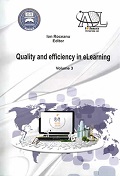MEASUREMENT OF THE STRIKE EXECUTION SPEED IN KARATE-DO BY USING THE QUINTIC INFORMATION SYSTEM
MEASUREMENT OF THE STRIKE EXECUTION SPEED IN KARATE-DO BY USING THE QUINTIC INFORMATION SYSTEM
Author(s): Răzvan-Liviu Petre, Marian Daniel TeodoruSubject(s): Education
Published by: Carol I National Defence University Publishing House
Keywords: measurement; speed; Karate-Do; Quintic information system
Summary/Abstract: Premises: The measurement and assessment, with modern information tools, of some indicators related to effort programming becomes a necessity in the context of the achievement, on the international level, of some limit performances. Hypothesis: The improvement of the strike execution speed determines the obtaining of better results. Objectives: To determine the strike execution speed and to analyze the strikes specific to Karate-Do fighters, by using the Quintic information system. Subjects: Performance athletes, practitioners of Karate-Do. The selected sample (10 male subjects aged 21 to 23 years old) was made up of athletes with very good results in different national competitions. Methods: The characteristic of our research required us to use the experiment method and, within it, we used the Quintic information system, designed to measure the motion assessment and analysis. The Quintic system main components are the personal computer (with a Quintic-4 Biomechanics software) and the digital video camcorder. Results: We recorded the initial and final execution speed and, subsequently, we statistically analyzed the main strikes used in Karate-Do. Through the records and, respectively, the statistical analysis of the main strikes used in Karate-Do, we managed to emphasize (among others) the following aspects: initial testing/final testing: mean for the Kizami Tsuki lunging punch: 6.24 m/s; 6.83 m/s; mean for the Gyaku Tsuki reverse punch: 7.49 m/s; 8.23 m/s; mean for the Ura Mawashi Geri reverse roundhouse kick: 8.39 m/s; 9.17 m/s; mean for the Mawashi Geri roundhouse kick: 11.59 m/s; 12.29 m/s. Our research hypothesis checking performed with the dependent t test (for all strikes) highlights a statistically significant difference between means (P < 0.05). Thus, the null hypothesis is rejected and the research hypothesis is accepted. Conclusions: The information system implementation in the specific training determines the execution speed control, recording, measurement and assessment, which provide us accurate data about this indicator level. The comparison between the initial and the final results validated the research hypothesis and, respectively, rejected the null hypothesis.
Journal: Conference proceedings of »eLearning and Software for Education« (eLSE)
- Issue Year: 9/2013
- Issue No: 03
- Page Range: 179-184
- Page Count: 6
- Language: English

